
Remember the Jetsons – that sci-fi cartoon from the early 60’s? Perhaps the cartoon was best known for flying cars and dinner served with the push of a button.
Today with 3-D printing we’re getting even closer to that reality. With this new technology we are reshaping the way we innovate and build products that even George Jetson would be proud of.
We’ve all seen those early examples of printed objects which ended up looking like tangled spaghetti more than anything else. While it’s true that 3D printing may be merely a fad for the hobbyist, it has also been used in defense, medicine and yes even for dinner.
So lets jump right in to the evolution of 3D printing. Explore our examples of 3d printing below – many interesting, lots useful, and some even entertaining.
Since 2008 when a the self replicating printer named RepRap was invented, 3-D printing has been on the “up swing” ever since.
Early Examples of 3D Printing

1. RepRap’s Self-Replicating Printer: In 2008 RepRap created a printer, named Darwin, that could print its own parts as well as many other 3D objects. This project opened up 3D printing to many new people and began an open-source movement.

2. Prosthetic Limbs: In 2008, the very first person walked on a 3D printed prosthetic leg. This innovation opened the way for Bespoke Innovations to develop 3D printed coverings for prosthetic legs, customized to match each person’s remaining leg and style.

3. MakerBot’s Cupcake CNC: MakerBot Industry is a New York based company that produces 3D printers for consumers. In March 2009 they began selling their first device, the Cupcake CNC, a highly customizable do it yourself printer that could 3D print objects up to 100 by 100 by 130 mm large.

4. Organovo’s Blood Vessel: In 2009, Organovo produced the first 3D printed blood vessel, one of many medical uses of 3D printing. This example also can be referred to what is called Bio Printing.

5. Organovo’s Human Vein: Continuing to expand the uses of 3D printing for medical purposes, in 2010 Organovo printed a human vein that uses organ cells, built around a printed scaffolding of “bio ink.”

6. Kor Ecologic’s Car: Urbee became the world’s first 3D printed car in 2011, and Kor Ecologic will soon come out with the Urbee 2. Urbee is a 3-whelled hybrid car, with both the exterior and interior made from 3D printed parts. It weighs only 1200 pounds, meaning that it uses fuel very efficiently.

7. Wake Forest’s Kidney Prototype: Scientists at the Wake Forest Institute for Regenerative Medicine, led by director Anthony Atala, created a 3D mold of a human kidney using biocompatible materials combined with human cells. The printed kidney lacked the inner structures of a real human kidney but opened the way for further work that in the future might enable the transplantation of functioning 3D printed organs.

8. University of Southampton’s Robotic Aircraft: Engineers at the university built a robotic, unmanned aircraft in 7 days. They built the plane with elliptical wings, a feature that is expensive to manufacture using traditional methods, for a total budget of only 8,000 US dollars.

9. imaterialise’s Jewelry: For the first time, a company began using sterling silver and gold as materials for 3D printed goods. Their products included necklaces, rings, and other jewelry. This innovation opened the doors for other jewelry to be manufactured that is inexpensive and highly customized.
10. Instructables First Vinyl Record: A 3-D Printed record of Kurt Cobain Nirvana is printed by Amanda from Instructables – the grooves are 10x wider so one record is about 6 minutes of playtime. The video below demonstrates this record and others which are printed using high resolution file:

11. 3D Systems’ Drum Kit: 3D Systems, a US based company, used a strong form of nylon to print a 5-piece drum kit. The drums feature intricate cut-out designs and have been played as part of a whole 3D printed band.

12. Tristan Bethe’s Shoe Burger: Tristan Beth used Shapeways technology to create a 3D printed mold of his shoe. He then filled the mold with bread mix in order to bake a hamburger bun. He also made a chocolate shoe for those with a sweet tooth.

13. LayerWise’s Jaw: LayerWise in Holland produced the first 3D printed jaw in 2012, which was a total lower jaw that could be entirely customized for the individual patient.

14. Scott Summit’s Acoustic Guitar: While on vacation, Scott Summit designed a model of an acoustic guitar, which he then had printed by 3D Systems. The plastic model held up better than expected to the pressure of tuning and opens up new possibilities for instruments customized for exactly the bass and treble desired.

15. James Bond’s Aston Martin: For the film Skyfall, the film team hired voxeljet, a Belgian 3D printing company, to create mini replicas of the classic Aston Martin DB5 used by Bond in the 1964 film Goldfinger. The company printed 18 parts of the car individually, so that they would be fully functioning.
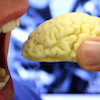
16. Inition’s Chocolate Brain: To show the power of 3D printing to create models of individual human organs, Andy Millions, the co-founder of Inition, created a chocolate 3D model of his own brain based on an MRI brain scan. Then, as might be predicted, he ate it.

17. Drexel University’s Dinosaur Bones: Paleontologists began using 3D printers to create replicas of dinosaur bones. They can scan the real bones to produce detailed, accurate models.

18. MIT’s Eat Your Face Machine: A team at MIT’s Media Lab built a 3D printer called the Eat Your Face Machine that uses a facial scan to make a 3D print into a block of chocolate.

19. Shane Graber’s Fish Breeding Equipment: Shane Graber used a personal Makerbot 3D printer to build custom pieces he needed for his fish hatchery. They are cheaper and faster to produce than buying them from the store.

20. Shapeway’s Infinite Bacon: Joaquin Baldwin used a Shapeways 3D printer to create a “bacon” mobius strip, made from vegan materials. The Mobius strip of bacon print file is made available by Shapeway for under $20.

21. The Smithsonian’s Historical Replicas: The Smithsonian has immense collections but isn’t able to lend many of them out. They’ve begun using 3D printing, however, to digitally create accurate replicas of some of their collections that are suitable for traveling exhibitions.

22. YukiSUZIKI’s Camera Lens: Using MakerBot’s Thingiverse platform, user YukiSUZIKI shared a design for a 3D printed camera lens. A camera lens has many complex parts, which he was able to create efficiently using 3D printing.
Current Examples of 3D Printing


23. Defense Distributed’s Gun: Starting with a more controversial example of 3D printing – Cody Wilson, working with a business named Defense Distributed, manufactured a 3D printed gun. Wilson was asked to remove designs for the guns from his website, and his domain was temporarily seized by the government.

24. WobbleWorks’ 3Doodler: WobbleWorks put 3D printing into the hands of consumers with 3Doodler, a 3D printing pen. With a structure that looks much like a glue gun, the 3Doodler uses a plastic thread that will stand on its own to allow users to draw and build 3D models and shapes.
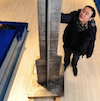
25. State Key Laboratory’s Airplane Spar: The State Key Laboratory of Solidification Processing at the Northwestern Polytechnical University in China used the technology of Laser Additive Manufacturing to 3D print a central wing spar 5 meters long for a Cormac C919 passenger plane. The plane is expected to fly in 2014.

26. Ivan Owen’s Robohand: Ivan Owen, working together with a man named Richard in South Africa, created a 3D printed prosthetic hand called “Robohand” to help Liam, a 5 year old boy who, due to a birth defect known as Ambiotic Band Syndrome, was born without fingers on his right hand.
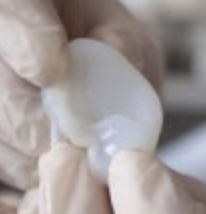
27. Cornell University’s Human Ears: Researchers at Cornell University learned how to design and produce lifelike ears that look similar to and perform like real ears. They use a high-density gel made of living cells to mirror the flexibility and durability of an ear’s natural cartilage.

28. Nike’s Football Cleat: Nike used 3D printing to create a cleat specifically designed to help football players get up to speed and come up with their best 40 yard dash time. 3D printing allows the shoe to be contoured perfectly, and it weighs only 5.6 ounces.

29. Oxford University’s Artificial Human Tissue: Scientists at Oxford University have used a custom-built 3D printer to create a material that performs some of the same functions as human living tissues. The material is made of thousands of tiny, connected droplets of water enclosed within thin lipid films. Scientists say these materials may be used to deliver medicine through the body or replace damaged human tissue.

30. Japan’s Micro-Bunny: A team of scientists from the Tokyo Institute of Technology, Yokohama National University, and C-MET created a tiny sculpture of a rabbit using 3D printing. This might not sound very exciting, but the bunny sculpture and a number of other whimsical sculptures are only the size of a bacterium. This development opens the door for other micro-printing applications, including fuel cells and biosensor interfaces.

31. MIT’s Artificial Bone: Using a combination of both stiff and soft polymers, researches at MIT successfully 3D printed an artificial bone. By using a combination of materials, they created a composite that is strong and highly resistant to fracturing.

32. NASA’s Rocket Engine Part: NASA, a major supporter of 3D printing, used 3D printing and additive manufacturing to create a rocket engine injector. During testing, the engine component created a record amount of thrust. NASA hopes that 3D printing will help reduce the cost of producing space hardware.

33. Solid Concepts’ Metal Gun: Although a 3D gun had already been created earlier in 2013, Solid Concepts was the first to create a metal gun, using powdered metals and a laser sintering process to create a gun made from stainless steel and inconel. The gun has proven itself capable of firing 50 rounds, and because Solid Concepts has a Federal Firearms License, they can provide guns and gun parts to qualifying consumers.

34. Protocell’s Running Shoes: A London designer named Shamees Aden created a prototype for an exciting new kind of running shoes. They are 3D printed to precisely fit the user’s foot and can even by dyed any color for the utmost in customization. Even more excitingly, the shoes, called Protocells Trainers, are made of protocells, a kind of molecule that reacts instantly to light, movement, and pressure. This means that as a user runs, the material can instantaneously react to provide extra to support to areas of high impact. After a run, the shoes can be placed into a jar of protocell liquid, which can repair any tears in the material overnight.

35. Plasticity Production’s Flying Drone: Louis DeRosa of Plasticity Productions used a 3Doodler to create a working hexacopter framed drone. The propellers, computer board, and wires were not 3D printed, but they were fit into a 3D printed frame that could be made extra light because it was printed from plastic threads.

36. LUXeXceL’s Glasses: LUXeXceL became the first company to 3D print both the frame and lenses of a pair of glasses, which they nominally gave the king and queen of the Netherlands before putting them on display. Their project is the first in a number of possible applications of optics-related 3D printing.

37. Hot Pop Factory’s Customized Pez Dispensers: Pez Dispenser Enthusiasts will love the opportunity to have a Pez Dispenser customized with a 3D printed replica of their own head. Hot Pop Facotry in Toronto made these by simply snapping the tops off of typical Pez dispensers and adding on the 3D printed heads.

38. Natural Machine’s Meals: Natural Machines has created a 3D printer called Foodini that can assemble entire meals, including pasta, pizza, chocolate, and cheeseburgers, that can then be cooked.

39. Buttercup the Duck’s Foot: Buttercup was a duck born with a backwards foot. She was unable to walk properly, causing her a lot of pain and limiting her chances of a long life. After her foot was amputated, a 3D Printing Company called NovaCopy designed a 3D printed foot based on a scan of Buttercup’s sister’s foot. Now Buttercup can walk properly.

40. Insects au Gratin’s Bug Biscuits: As part of an exhibition at the Wellcome Collection in London, Susana Soares designed a 3D printer that creates biscuits made from insect flour.

41. Victoria’s Secret Lingerie: Victoria’s Secret teamed up with Shapeways to create a 3D printed corset made of an intricate design with thousands of Swarovski crystals.

42. Automotive Industry’s Prototypes: Both General Motors and Ford have begun using 3D printing to more quickly create prototypes for car parts, such as brake rotors, floor consoles, and shift knobs.

43. Emma’s Magic Arms: A toddler named Emma was born with a rare disease called ARthrogryposis Multiplex Congenita, which left her unable to lift her arms. Researchers at Nemours created a 3D printed exo-skeleton that allows her to lift and control her arms. Because it is 3D printed, parts can also be replaced quickly as Emma grows or if they break.

44. FabCafé’s Gummy People: FabCafe, a company in Japan, enabled men to create 3D scans of themselves that were turned into gummy shapes, as an alternative to gummy bears. FabCafe envisioned them as gifts that men could give their girlfriends on romantic occasions.

45. Mixee Labs’ Mixee Me: Mixee Labs is drawing on the customizable power of 3D printing to make mini figurines that can be customized to look like you. They’re available through Amazon.

46. Cubify’s Sculpted iPhone Case: There are many 3D printed phone cases out there. This one takes full advantage of 3D printing by turning photographs into 3D sculptures on the back of a phone case.

47. Eye of Gyre’s 3D Printing Photo Booth: The Eye of Gyre in Japan has used a traditional photo booth setup to produce 3D figurines. They take photos from all angles to create extremely accurate miniature replicas.
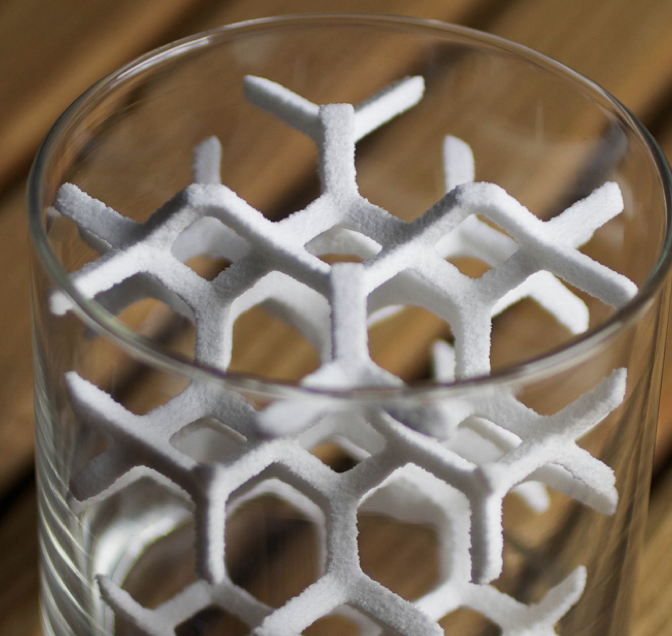
48. The Sugar Lab’s Sugar Sculptures: The Sugar Lab is using sugar as a building material for 3D printing, creating beautifully intricate sugar sculptures. Some may be used for intricate wedding cakes and decorative sugar cubes for coffee.

49. Emerging Objects’ Earthquake-Proof Column: Emerging Objects has used 3D printing to create columns modeled on an Incan building technique: closely interlocking blocks that fit together without mortar. They can shift slightly while remaining stable, making them resistant to damage from earthquakes.

50. Jin Hai Lake Resort’s Salt Rooms: Jin Hai Lake Resort in Beijing is 3D printing parts to make rooms out of salt for their resort. The salt walls are constructing from a matrix of geometric shapes that allow light to pass through.

51. Building Bytes’ Bricks: Architect Brian Peters has designed a 3D printer that produces bricks. He envisions them mass-producing bricks made out of ceramic, concrete, or cement right at a construction site.

52. ThinkGeek’s Play-Doh 3D Printer: ThinkGeek is selling a 3D printer targeted towards kids that connects to an ipad, printing any design out of Play-Doh. It’s available for $49.99.

53. Shapeways’ Silver Jewelry: Shapeway created a number of consumer products using 3D printing, including phone cases and jewelry. They can create customized silver jewelry by 3D printing a wax model, created a plaster mold around the model, then casting silver in the mold.

54. Continuum’s “Myth” Line of Shoes: Continuum uses carbon fibre and wood composite to make shoes that are inspired by classical myth. They aim to use 3D printing to create innovative designs and cut out almost all waste in their production process.

55. Continuum’s Bikini: Continuum markets their bikini as the first item of clothing that is made entirely from 3D printing. All of the pieces, including clasps, are made using a 3D printer. They use a material called Nylon 12 that is extremely flexible and strong even in thin pieces.

56. Designs for Hope’s Bicycle Generator: Engineers at the non-profit Designs for Hope designed a generator that could be attached to the back of a bicycle, using the bike’s rotational power to produce energy that can charge electronic devices. They are being used by workers in Uganda who have limited energy to charge their phones.

57. Cokreeate’s 3D Comic Book Cover: Comic Book company decided to make one of their comic books pop with a 3D cover. They used ColorJet Tech to produce a fully colorful 3D cover that matched the original.

58. Riverhead Books 3D Slip Cover: For Chang-rae Lee’s book On Such a Full Sea, the publishing company wanted to do something a little different. They collaborated with Makerbot to create a limited-edition slip cover for the book, which features the title coming off the front in 3D slanted letters.

59. Bza.biz’s Sound Wave Jewelry: Bza.biz designs 3D printed jewelry, and they’re now using the technology to turn sound waves into 3D designs. Their most popular is a 3D production of the phrase “I love you.”

60. Shapeways’ Inception Top: 3D printing has a lot of potential for creating movie replicas. Shapeways has capitalized on this to create a replica of Cobb’s icon, a spinning top, from the movie Inception.

61. Steelblue’s 3D Map: Steelblue created a 3D printed map of San Francisco for use in showcasing real estate projects. It also sheds new light on city planning and was produced for far less of the cost of traditional 3D models of similar size.

62. Osteoid’s Cast: Turkish company Osteoid has designed a lightweight 3D printed cast for use in healing broken bones. It uses a latticework, which allows air to flow through it, and can be customized based on a scan of the broken arm.

63. Medicrea’s Spine Cage: Continuing the benefits of 3D printing for medicine, Parisian manufacturer Medicrea created a 3D-printed spine cage, which can replace damaged or deformed disks in patients who suffer from spinal instability or disc degeneration.

64. CSIRO’s Mouthpiece: Australian company CSIRO has designed a 3D printed mouthpiece that clears the airflow for people who suffer from sleep apnea.

65. University Medical Centre Utrecht’s Skull: For a woman suffering from a bone disorder that greatly thickened the bone of her skull, neurosurgeons in the Netherlands designed a 3D printed cranium based on her skull. They were then able to successfully implant it, saving her brain from damage.

66. RUAG’s Satellite Components: RUAG, a Swedish company, has partnered with Altair, a design company, to produce an antenna support for an Earth Observation Satellite. The 3D printed support will be lighter and more efficient.

67. Don Clucas’s Thermodynamic Engine: Don Clucan, a New Zealand man working with the University of Canterbury, has designed a small engine that is made entirely from 3D printing. It runs entirely off of thermodynamics, so all it needs to produce energy is hot and cold water.

68. EMS’s Facial Reconstructions: Typically, forensic facial reconstruction to identify a body is done by adding clay to the skull, but this can damage the skill. A Florida company, Engineering and Manufacturing Services, Inc., has developed a system to take a 3D scan of the skull and then print a lifesize 3D replica.

69. Joy Complex’s Conductors’ Batons: To celebrate Beethoven’s 244th birthday, Joy Complex designed a conductor’s baton that is a visual representation of the sound waves of part of Beethoven’s Symphony No. 5.

70. Aleksandrina Rizova’s Table: 3D printing is an impressive tool for artists and designers, enabling very complex design. Architectural designer Aleksandrina Rizova took advantage of this and teamed up with 3DPrintUK to design a walnut table with intricately curving 3D printed legs.

71. Judith Klausner’s Cameo Replications: Sculptors have always struggled to find a way to reproduce their work in a way that can be sold to average consumers. Judin Klausner, a sculptor, has found a way to do this. She sculpts unique objects: cameos on Oreos made out of Oreo cream. She creates 3D printed replicas that maintain the detail of the originals, but they are relatively cheap to produce.

72. Len Chandler’s New Heel Bone: Len Chandler, and Australian man, has cartilage cancer and developed a tumor in his heel bone. He was facing amputation when his doctors at St. Vincent’s Hospital in Melbourne used 3D printing to create a new artificial heel bone capable of carrying his weight.

73. The Sound City Project’s Recording Device: The Sound City Project aims to capture the full soundscape of a number of US cities. To do this, they 3D printed a recording device that has 4 “ears” reaching out in different directions to capture sounds from all around.

74. Cunicode’s Espresso Cups: Cunicode embarked on a project to design one unique ceramic espresso cup per day and then have them 3D printed by Shapeways. The results are an impressive mix of the beautiful and the entertaining.

75. Tokyo Virtual World’s Landmark Replicas: A Japanese company, Tokyo Virtual world, specializes in making 3D models and dioramas. They are creating replicas of famous buildings, such as the Colosseum in Rome and the Eiffel Tower in Paris, with a high level of detail.

76. Ultimate Ears’ In-Ear Monitors: Most musicians need in-ear monitors to properly hear their music while on stage or recording. Ultimate Ears is using 3D printing to create customized in-ear monitors that will improve comfort and performance.

77. PetPrints3D’s Pet Replicas: Throughout the years, many people have wanted to create something to honor and remember their pets. PetPrints3D uses pictures taken from multiple angles to create customized small statues of pets, taking pet portraits to the next level.

78. University Hospital of Montepellier’s Embryo Model: Doctors at this hospital have a process to 3D print a model of the embryo of woman who will undergo in vitro fertilization. This allows them to fully examine the embryo and make preparations for the most successful fertilization attempt possible.

79. Morgan Stanley Children’s Hospital Infant Heart: A newborn baby at the hospital was suffering from a congenital heart defect. Surgeons created a 3D printed replica of the baby’s heart so that they could study it and prepare for exactly what they needed to do in surgery, enabling them to save the baby’s life.
Future Examples of 3D Printing

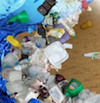
80. Plastic Bank’s Recycled 3D Printing: Plastic Bank is working on a project that will collect plastic waste and use it to 3D print everyday items. Their goals are to remove plastic waste from oceans and help poor communities by offering them credits for plastic collections.

81. NASA’s 3D Printed Food: NASA is funding a project to develop 3D printed food, which could be used to provide astronauts on long duration journeys with more varied and nutritional food, with some en-route customization.
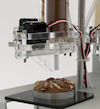
82. Marcelo Coelho’s Digital Chocolatier: Marcelo Coelho, using MIT’s lab, has created a digital printer for making and testing out different chocolate confections. It combines layers of different ingredients and allows users to keep track of calories and rate different recipes as they try them. So far, it only exists as a prototype.

83. Cornell’s 3D Printed Meals: Scientists at Cornell University’s Computational Synthesis Lab are working on creating a syringe-based 3D printer that can make any kind of meal. They’re still working on developing liquid-based ingredients, but they imagine the printer can be used to create meals with customized taste and texture and with exactly the nutrients people need.

84. NASA’s Houses on Mars: Working for NASA, the University of Southern California’s Viterbi School of Engineering is working on 3D printer that uses concrete to build entire houses. They hope they’ll be able to use natural materials on Mars to construct buildings as part of a settlement there.

85. Airbus Cabins and Parts: Airbus is already using 3D printing to manufacture a small number of parts. They hope to expand their use of 3D printing to create more parts and eventually entire cabins.

86. ESA’s Lunar Base: One of the challenges of building in space is that transporting materials is very difficult. 3D printing allows local materials to be used. ESA is planning to use a 3D printer to construct walls of a lunar base out of lunar soil, which will go around an inflatable core.

87. University of Toronto’s Skin: Engineering students at the University of Toronto won a grant from the James Dyson Awards program for their PrintAlive Bioprinter, which can create 3D printed, skin-like material that will hopefully one day be able to do for grafting procedures following severe wounds.

88. NASA’s Microgravity 3D Printer: NASA recently granted funding to Made in Space Inc. to work on building a 3D printer that can function in the microgravity of space. This printer should be able to manufacture parts without the need for supplies coming from Earth.

89. Harvard’s Batteries: Harvard is working on 3D printed lithium-ion microbatteries. These are so small that they’ll be thinner than a human hair, opening up opportunities for powering medical implants and tiny robots.

90. Mink’s Makeup: Mink or working on launching a 3D printer, targeted towards young women, that allows them to choose any color and print it into eye shadow, lip gloss, or blush. It aims to drastically expand the color palette available at most makeup stores.

91. Modern Meadow’s Meat and Leather: A US startup called Modern Meadow is working on producing leather and meat products without animal tissues. He believes he can use a stem cell sample to create hundreds of live cells, then print them into meat-like products.

92. Contour Crafting’s Houses: The same team working on designing a Mars base for Nasa, Contour Crafting, is developing very large 3D printers that can build entire houses based on a computer design. It even includes the necessary conduits for plumbing and electrical work.

93. NASA’s Wood: NASA has given a grant to researcher Lynn Rothschild at Stanford University to develop the technology for 3D printing wood. Her printer will print out culture cells that will then be able to excrete wood, just like that from a tree. This will enable astronauts to have building supplies without carrying heavy lumber into space.

94. Organovo’s Human Livers: Organovo is doing a lot of exciting work with 3D printing and human implants. One project they’re working on is 3D printed liver tissue made from human tissue. The livers can be used to test pharmaceutical drugs for liver toxicity and may eventually be available for implants.

95.The American Academy of Ophthamology’s Prosthetic Eyes: Eye cancer can be a devastating disease, and surgery can leave patients missing an eye. Researchers are developing a project to use 3D scanning and printing to create prosthetic eyes that perfectly match the patient’s remaining eye. They should be able to be produced more quickly and cheaply than traditional false eyes.

96. WASP’s Homes: A group named the World Advanced Saving
Project (WASP) is working on a 3D printer which they hope will enable them to 3D print homes for people in third world countries, enabling them to improve people’s living conditions at a low cost.

97. U.S. Army’s War Heads: The U.S. Army is working on a project to 3D print warheads. They’ll be able to control the geometry and add metallic shapes that make the warheads more effective than is possible with traditional manufacturing techniques.

98. Yahoo’s Hands on Search: Yahoo in Japan is creating a search tool, called Hands on Search, that allows blind children to search for objects online. When the computer finds a prototype of the object being searched for, it 3D prints a solid representation of that object, allowing blind children to touch it and learn about it.

99. Freedom of Creation’s Pasta: Janne Kytannen, a founder of the design studio Freedom of Creation, is developing technology to 3D print a range of food, including pasta. She believes that in the future, everyone will be able to 3D print creative and unique shapes for their meals using 3D printers at home.
100. Rescue missions and military operations: Super high-tech on-board 3D printers, via Additive Layer Manufacturing and robotic assembly techniques are used in the video example below:
Some additional notes on 3D Printing
Well we hope you have enjoyed our examples of 3D printing.
As 3D printing becomes ever more popular, we think it will be interesting to see how regulations of intellectual property surrounding this technology might change.
Among the many controversies surrounding 3D printing, one of the most famous is gun control. In 2012, a group in the U.S. called Defense Distributed created a 3D printed plastic gun and published the design online, allowing anyone with a 3D printer to create their own gun.
Currently though, in the U.S. it is legal for individuals to produce their own firearms for personal use (excluding assault weapons and Title II weapons such as machine guns). In most of Europe, it is illegal to produce a gun using 3D printing.
3D printing also poses some complicated challenges to intellectual property and copyright. It is possible, for instance, to create a design based on a physical product that already exists, 3D print it, and sell it yourself.
Many online 3D printing communities, such as Thingiverse and Shapeways, include designs for figurines of movie and TV show characters, for example. Usually, these designs stay up unless a copyright holder asks for them to be removed.
Despite these complications, it seems certain that 3D printing is going to continue growing. Companies such as Organovo, Stratasys, MakerBot, and Shapeways are continuing to find new applications for 3D printing and bringing it to an ever-growing audience.
3D printing is also gathering investments and partnerships from many large names, including NASA, Hewlett-Packard, and Amazon. These companies and individuals everywhere are recognizing the potential that 3D printing has.
Perhaps what is most exciting about 3D printing, however, are the possibilities that we can’t yet imagine. The technology of 3D printing has already come so far. It has helped many people and industries and become increasingly accessible.
Furthermore, it is characterized by enthusiastic and creative people constantly creating new uses for it. It seems certain that 3D printing will continue to surprise us in the future.

